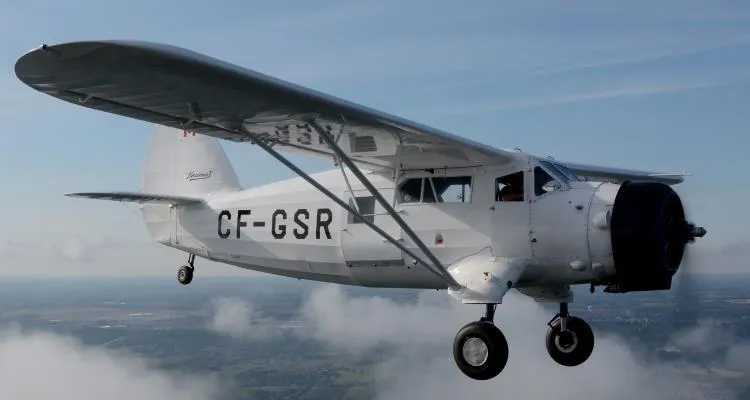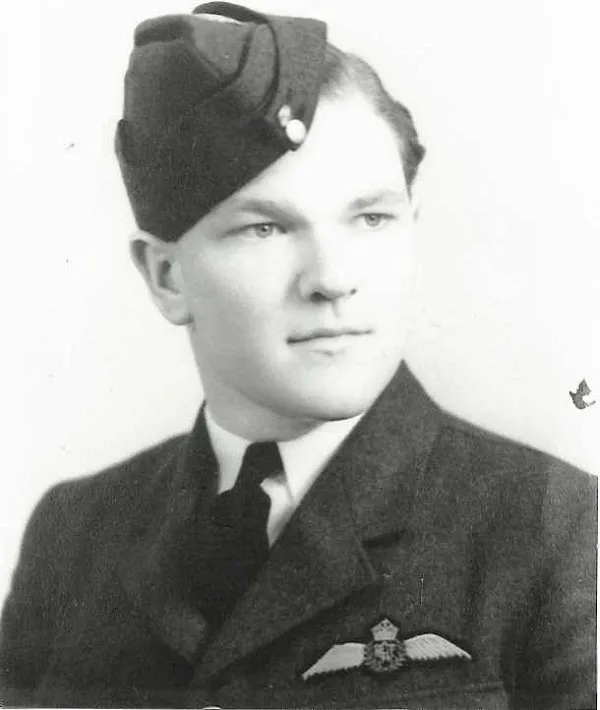Scrivener, Edward Charles
Killed in Flying Accident 1944-02-04


Birth Date: 1907-August-31
Born:
Son of Henry J. Scrivener and Alice M. Scrivener, of Vancouver; husband of Margaret E. Scrivener, of New Westminster.
Home:
Enlistment:
Enlistment Date: Unknown
Service
Army
Unit
166 Sqn- Squadron
Base
Rank
Lance Bombardier
Position
Lance Bombardier
Service Numbers
K/15706
This incident involved multiple aircraft:
- Norseman Mk. IV Serial: 695
All the above aircraft in the above list are referenced in this report.
Norseman 695
Noorduyn Norseman

Canadian Warplane Heritage Museum
The Noorduyn Norseman, also known as the C-64 Norseman, is a Canadian single-engine bush plane designed to operate from unimproved surfaces. Distinctive stubby landing gear protrusions from the lower fuselage make it easily recognizable.
Introduced in 1935, the Norseman remained in production for almost 25 years with over 900 produced. A number of examples remain in commercial and private use to this day. Norseman aircraft are known to have been registered and/or operated in 68 countries and also have been based and flown in the Arctic and Antarctic regions.
The Noorduyn Norseman was designed by Robert Noorduyn in Montreal in the mid-1930s as a rugged transport plane, well suited to operations in the Canadian North. The prototype (CF-AYO), a floatplane, first flew from Pointe aux Trembles, Quebec on November 14, 1935. A high winged monoplane, powered by a Wright Whirlwind 420 hp engine, the aircraft had an all welded steel tubing fuselage covered with fabric. The wings were of all wood construction and were fabric covered as well. The Norseman was designed with a rugged landing gear that was equally at home on floats, skis or wheels.
The prototype proved somewhat underpowered. So, after further development, the definitive Norseman, the Mark IV, powered by a 550 hp Pratt & Whitney Wasp flew from Noorduyn's Cartierville, Quebec, factory in November 1936. Were it not for WWII, the production run would have lasted probably less than a hundred planes.
Until 1940, Noorduyn had sold only 17 Norseman aircraft, mainly to commercial operators in Northern Canada and to the RCMP. However, once the war started the Royal Canadian Air Force ordered 38 Norsemen as Wireless and Navigational trainers for the British Commonwealth Air Training Plan. In July 1941, following the establishment of a successful transatlantic ferry route from Canada to the UK by the Royal Air Force, aviation pioneer Bernt Balchen was enlisted by the United States Army Air Force to evaluate another ferry route across Greenland. Balchen requested six Norsemen for the job. Impressed with their performance, the USAAF then issued the UC-64A specification for a rugged military light transport plane. After the US entry into the war, more than 800 Norsemen were produced for both the USAAF and the RCAF. During WWII, Noorduyn Norseman aircraft were flown in several theatres of war, including Alaska, Europe and Australia. Eventually, it served with the military in eight countries.
On Sept. 25, 2015, the Canadian Warplane Heritage Museum took delivery of the latest addition to their growing fleet of flying aircraft "“ Noorduyn Norseman Mk. V (CF-GSR). Obtained from Ernie and Donna Nicholl at Huron Air & Outfitters as a split donation/purchase in early 2014. CF-GSR had previously served several operators including Canadian Forest Products, Austin Airways, Slate Falls Airways, Silver Wings Air Service, Ilford-Riverton Airways and Bearskin Airlines Most of its life was spent on floats ut it was configured over to wheel landing gear before being ferried to Hamilton Airport. Although CF-GSR never saw service with the RCAF, in keeping with the Museum's mandate, the Norseman will bepainted in a RCAF scheme at some point in the future. Wikipedia and Canadian Warplane Heritage Museum
Norseman 695
Norseman Mk. IV 695
Originally registered as CF-AZA, built as a Mk. II in 1936. Sunk near Fort McMurray, Alberta in June 1938, while still on civil register with McKenzie Air Service. Drunken, non pilot mechanic attempted take off, struck sand bar. Shipped to Edmonton for repairs. Converted to Mk. III on 4 December 1936, and to Mk. IV on 28 April 1937. Operated by No. 6 (BR) Squadron, from RCAF Station Alliford Bay, BC, in 1940/41. Operated by No. 122 (K) Squadron at Patricia Bay when it received Category C damage at RCAF Station Patricia Bay, BC, at 14:40 on 6 October 1942. Aircraft had been performing training circuits in Cowichan Bay, heavy weather came up while returning to Patricia Bay. Struck a large wave while touching down, which seperated several float struts, but the aircraft was towed ashore without further damage. No injuries. With No. 116 Squadron when it crashed near Port Alice, BC on 4 February 1944, while returning to squadron base at RCAF Station Coal Harbour. Had been to Port Alice on a liaison flight.1940-02-24 Taken on Strength 2022-02-07
1942-October-06 Accident: 122 (COMPOSITE) Squadron Loc: Rcaf Stn Names: Delaveau | Dingwall | Hennell
1944-February-04 Accident: 116 Squadron Loc: Port Alice Names: Barker | Eccles | Moore | Powell | Scrivener
1944-07-20 Struck off Strength written off after crash on 4 February 1944, 4 fatalaties, see comments. 2019-08-20
 Burnaby (Forest Lawn) Memorial Park British Columbia, Canada
Burnaby (Forest Lawn) Memorial Park British Columbia, Canada Canadian Virtual War Memorial
Canadian Virtual War Memorial Commonwealth War Graves Commission
Commonwealth War Graves Commission www.findagrave.com
www.findagrave.com

 Norseman
Norseman Wikipedia Norseman
Wikipedia Norseman Harold A Skaarup Web Page
Harold A Skaarup Web Page